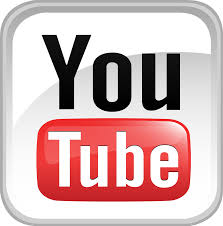
YouTube is a video-sharing website, created by three former PayPal employees in February 2005 and owned by Google since late 2006, on which users can upload, view and share videos. The company is based in San Bruno, California, and uses Adobe Flash Video and HTML5 technology to display a wide variety of user-generated video content, including movie clips, TV clips, and music videos, as well as amateur content such as video blogging, short original videos, and educational videos. Most of the content on YouTube has been uploaded by individuals, although media corporations including CBS, the BBC, VEVO, Hulu, and other organizations offer some of their material via the site, as part of the YouTube partnership program. Unregistered users can watch videos, while registered users can upload an unlimited number of videos. Videos considered to contain potentially offensive content are available only to registered users at least 18 years old. YouTube, LLC was bought by Google for $1.65 billion in November 2006 and now operates as a Google subsidiary. In 2009, 350 million people visit the site every month sharing videos. In May 2010, YouTube announced that it has surpassed the two billion videos viewed daily. On October 28, 2010, all YouTube ‘channels’ reached one billion total subscribers (not views, but subscribers to these channels).
YouTube Layout
First-time visitors to YouTube might feel a little overwhelmed when they arrive at the main Web page. The page shows thumbnails of videos currently being watched by other users, a list of promoted videos, a larger video window on the right featuring a sponsored video and a list of featured videos farther down the page. There's also a search field that visitors can use to look for videos about a particular person or subject. The main page has tabbed links to three other important YouTube sections: videos, categories and channels. Each tab lets you search for videos in different ways: 1. Video Tab takes you to a page where you can browse videos based on various statistics 2. Categories Tab arranges videos into broad subject categories, like autos and vehicles or entertainment 3. Channels Tab divides videos into sections based on the type of member who uploaded the videos. In other words, you can search for videos uploaded by comedians, directors, gurus, musicians, nonprofits, partners and sponsors.
Social Impact
While other video hosting websites had been launched before YouTube in 2005, YouTube invented a brand new concept unlike any other competitor. Up until that point, it was always the people who owned the website who would provide content, YouTube allowed the shift to ‘user generated content.’ In December 2006, Time magazine wrote: "YouTube is to video browsing what a Wal-Mart Supercenter is to shopping: everything is there, and all you have to do is walk in the door." An early example of the social impact of YouTube was the success of “The Bus Uncle” video in 2006, "Charlie Bit My Finger" in 2007 (viral video that holds the record for the most views for non-music YouTube video and "Gangnam Style" in 2012 (record for views). When we think and talk of videos or content “going viral” this is due to YouTube.
Revenue Sources
The vast majorities of videos on YouTube are free to view and supported by advertising. In May 2007, YouTube launched its Partner Program, a system based on AdSense which allows the uploader of the video to share the revenue produced by advertising on the site. YouTube typically takes 45 percent of the advertising revenue from videos in the Partner Program, with 55 percent going to the uploader. There are over a million members of the YouTube Partner Program. In May 2013, YouTube introduced a trial scheme of 53 subscription channels with prices ranging from $0.99 to $6.99 a month. The move was seen as an attempt to compete with other providers of online subscription services such as Netflix and Hulu.
 RSS Feed
RSS Feed